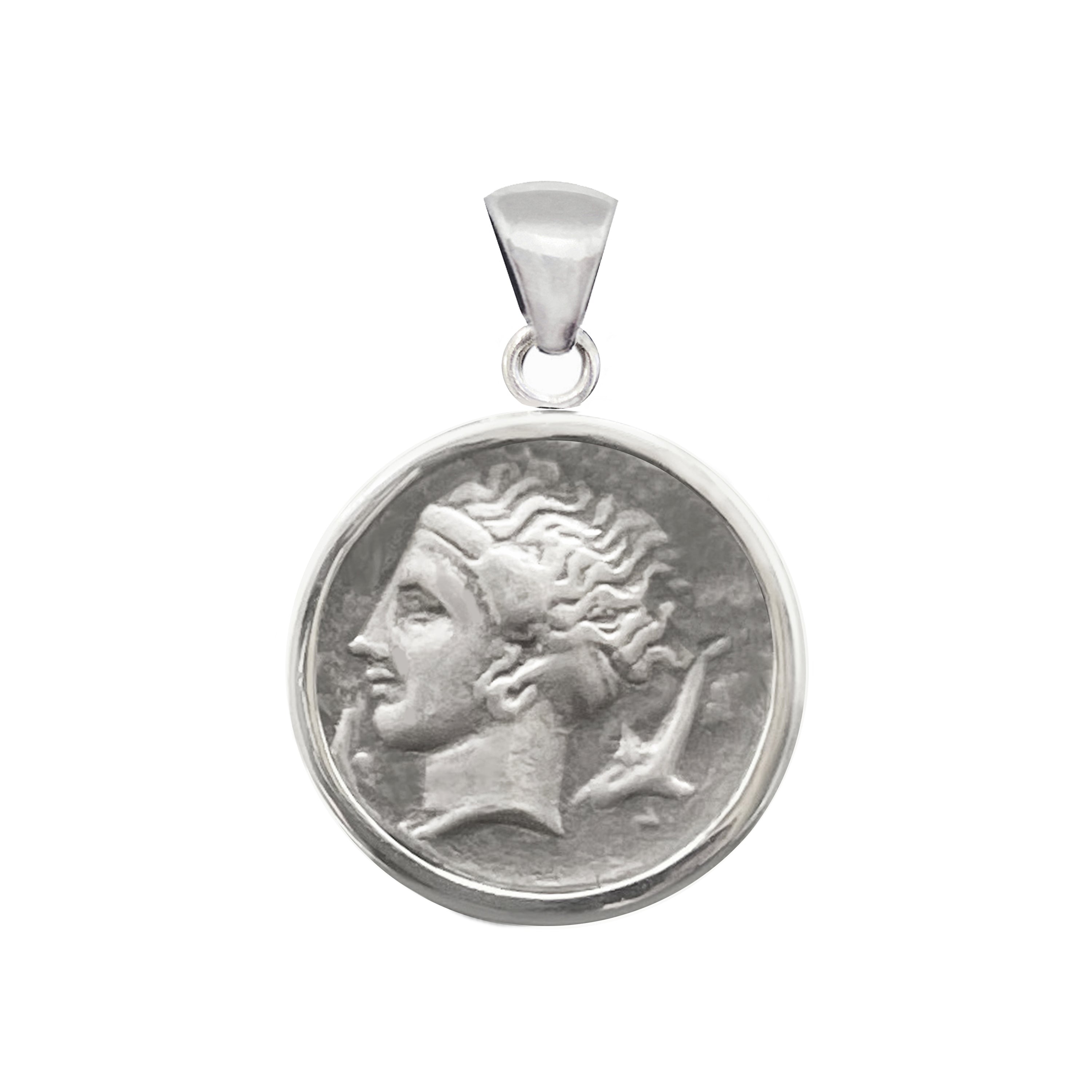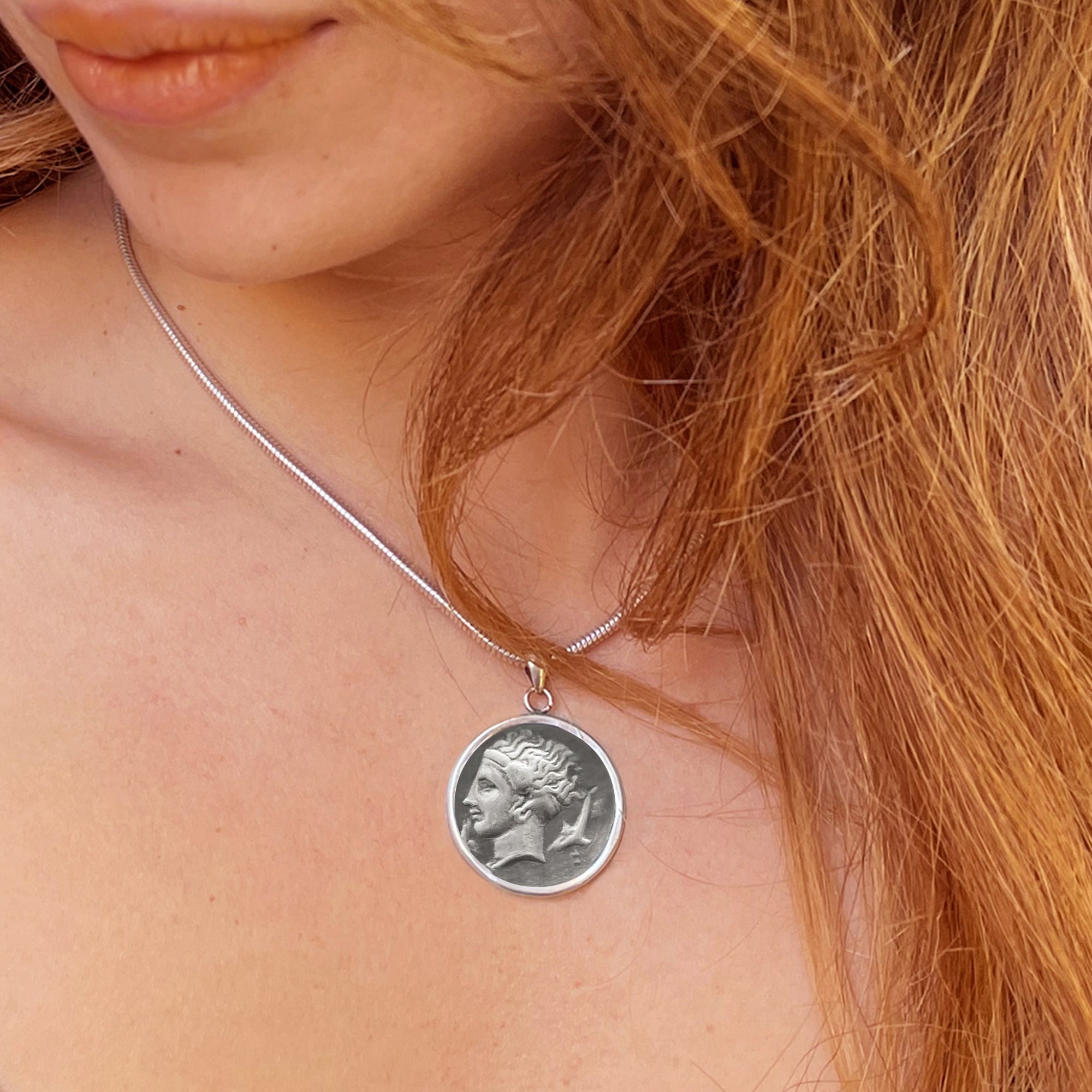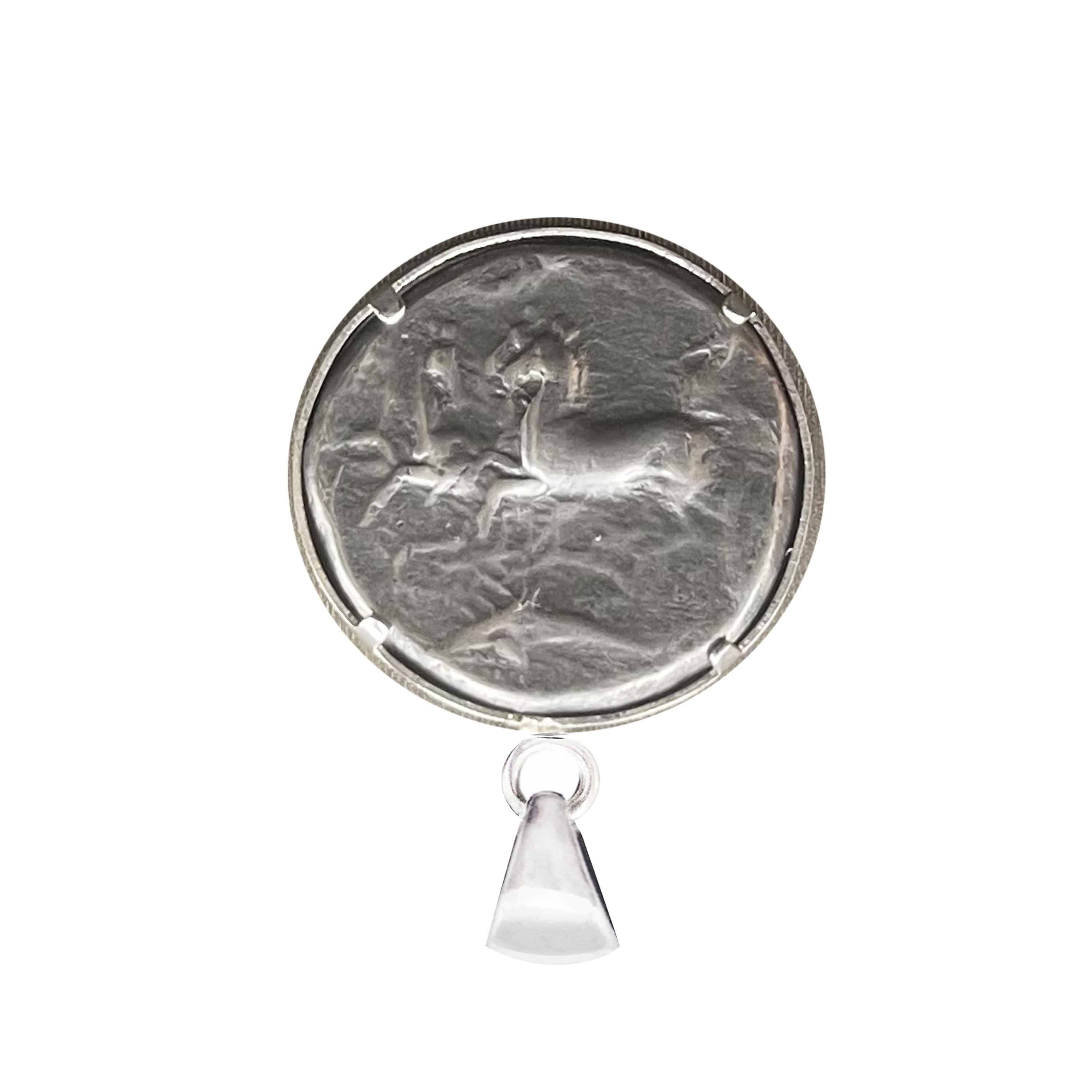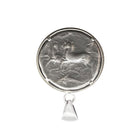Genuine Greek silver coin pendant depicting the Nymph Arethusa with dolphins; charioteer and Nike on the back
This pendant showcases an authentic Syracuse coin minted by Dionysus I (405-367 BC). One side of the coin depicts the Nymph Arethusa with dolphins, while the other side portrays a charioteer driving horses and a flying Nike.
According to Greek mythology, Arethusa was a Nereid, the daughter of Nereus. She fled from her home in Arcadia and transformed into a fresh water fountain on the island of Ortygia in Syracuse, Sicily. The myth of her transformation begins when she encountered the river god Alpheus while bathing in a stream. Discovering his intentions, she fled to remain a chaste attendant of Artemis. Despite her efforts to escape, Alpheus pursued her relentlessly. Seeking protection, Arethusa prayed to Artemis, who hid her in a cloud. Alpheus persisted, and in her fear, Arethusa transformed into a stream. Artemis then created an opening in the ground, allowing Arethusa to flee once again. Her stream traveled beneath the sea to the island of Ortygia, where Alpheus followed and mingled his waters with hers.
In Roman writings, Arethusa is sometimes referred to as "Alpheias" due to the belief that her stream had an underground connection with the river Alpheius in Peloponnesus. A legend still recounted in Sicily today claims that a wooden cup thrown into the River Alpheius will reappear in the Fountain of Arethusa in Syracuse.
Our jewelry store, Serra Roma, proudly presents an exquisite collection that beautifully honors the ancient traditions of Greek and Roman civilizations. Each piece in our collection, including authentic ancient Roman and Greek coins and intaglios, is accompanied by a certificate of authenticity, providing proof of its historical significance and origin.













